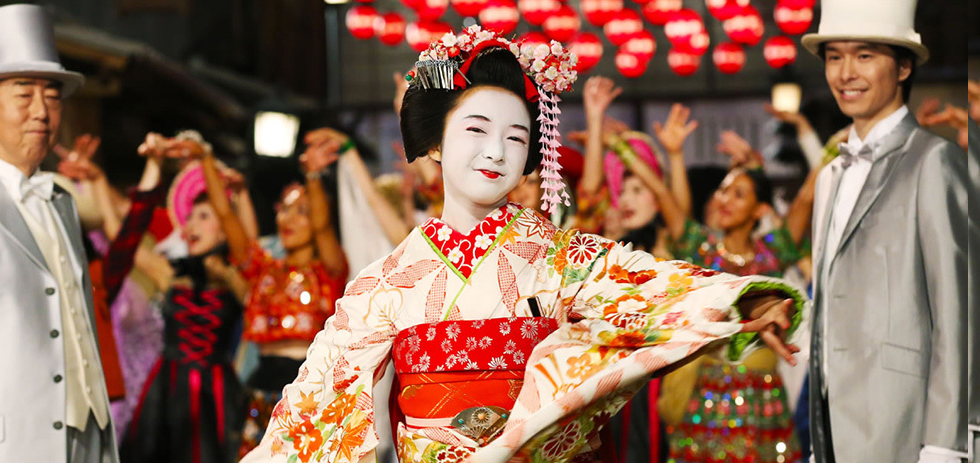
Don’t set too much stock in that green ribbon above this sentence. This ‘recommendation’ is a light, qualified and totally contradictory one, as Lady Maiko, Masayuki Suo’s loose Japanese remake of My Fair Lady is charming, ludicrous, amateurish, languid, and fun, all in equal measure. In the final analysis, it’s a film entirely worth seeing, primarily as a curious and rare case study of what happens when a canonical Western narrative is appropriated in a totally different national and industrial context. Lady Maiko rehashes George Cukor’s 1964 classic, in which a Cockney waif is trained by a professor in the prim and proper ways of Edwardian England, as a modern-day geisha story in which an ancient institution is fading into irrelevance.
Haruko (Mone Kamishiraishi), a Kyoto teenager, applies to study as a maiko, effectively trainee geisha, in a district where the kimono-and-hairpiece traditions are kept – all too artificially – alive. The main reworking of My Fair Lady’s narrative comes in the form of a visiting linguist (Hiroki Hasegawa), who takes on a wager to transform the mousy ruralite into a perfect Kyoto hostess. Over the course of the film’s two-and-a-quarter hours, ridiculous J-Pop musical numbers, a cast of half-believable supporting characters, and a number of oblique narrative asides combine to form the backdrop of this premise. What emerges is a film that’s fascinating in its poorness: usually mystifying, sometimes hilarious and always genuine.
To Lady Maiko’s credit, it doesn’t seem to take itself too seriously. Stories of geisha abound in Japanese cinema, and a family-friendly musical remake of a British play could hardly be further from the usual melodramatic narratives that have most famously served the topic – Kenji Mizoguchi made several films about the social disenfranchisement of geisha women, all considerably better than this one. Then again, Street of Shame didn’t feature a synth-rock song by a valet about the joys of servitude. It’s perversely refreshing to see a film using such a ‘classic’ premise to such flippant ends; the shows put on by the Shimohachiken maiko at the beginning of the film are intentionally tacky and disappointing, and staged for the benefit of a European visitor to the city rather than to serve any cultural purpose. As Haruko is versed in the traditional dialect of Kyoto maiko, the correct posture, fan placement, and musical techniques, interlocutors ranging from elderly clients to a geeky research assistant (Gaku Hamada) cross her path. The incongruity of the arcane etiquette she is learning is played off against the Macbook-owning thirtysomething professor Kyono largely for comic effect, but with a cutting edge that suggests Lady Maiko is well aware of the absurdity of the traditions it portrays. The assistant, Shuhei, even bashfully references the geisha profession’s roots in prostitution.
In truth, spotting the ways in which Lady Maiko resembles, rejects and reworks My Fair Lady is far more entertaining than the film itself. For example, the famous “Rain in Spain” sequence is recreated here, with a still green Haruko crassly singing “What happens when it pisses down in Kyoto?” Incidental rather than set-piece music is actually deployed smartly, too, with brass and piano sections sounding genuinely like a Sixties musical. Crucially, though, Maiko deviates from My Fair Lady by injecting an elegiac tone into its plot and more or less removing any romantic implications. The aforementioned exploitation traditionally involved in the geisha profession would make any romance unpalatable, and while Eliza Doolittle was never supposed to represent a dying breed of grubby urchins, Haruko (and her family, in revelations at the end of the plot) is a trainee in a fading institution, polishing the deck on the Titanic. Ultimately, pondering the ramifications of the decision to represent My Fair Lady in such a way is what makes Lady Maiko worth the admittedly overlong effort. Still, the film is not impossible to enjoy on at least some of its own merits, as a knowingly silly and happily indulgent slice of Kyoto kitsch.
